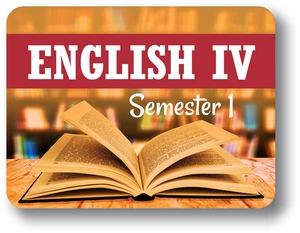
The course begins with an introduction to poetry covering structure, rhyme, language elements, nuance, word meaning, and figurative language. These concepts and others (like literary devices and theme) are reinforced through poems by American poets like Walt Whitman, Gwendolyn Brooks, and Robert Frost. British poetry selections from the Romantic period include works by William Blake and Lord Byron. Poetry from the Romantic period provides students with an opportunity to focus on how poets use language to convey meaning, a sequence of events, author perspective, and personal reflection on a literary work. The period's characteristics provide students with a solid grasp of Romanticism and literature and the ability to write objective summaries and cite textual evidence to support their ideas about a text. Poetry concludes with Shakespearean sonnets, which students evaluate for word choice, literary devices, and thematic development. Evaluating poetry helps students develop and fine-tune close reading and analytical skills, benefiting them as they read and evaluate texts in future courses.
The course transitions to American literature. An overview and discussion of its evolution from the 18th to the 21st century helps students understand significant literary periods. They learn concepts like story elements, providing them with skills to evaluate and analyze any piece of literature. Selections include "The Emigrants" and "The Legend of Sleepy Hollow." Various narrative techniques are explored to demonstrate how authors use language and story elements to develop a plot and create memorable characters, which also helps students with their writing.
Eighteenth to 20th- century British literature is covered via various mediums like novels, short stories, and drama. This approach exposes students to influential British authors and their works as they apply concepts from the course to various texts. The importance of task, purpose, and audience is reinforced by analyzing selections such as The Lucky Mistake by Aphra Behn and short stories like "Araby" (James Joyce), "The Interlopers" (Saki), and "The New Dress" (Virginia Woolf). Students benefit from an introduction to British drama and some of Britain's greatest playwrights, focusing on "D Company" by Miles Malleson. Previous concepts are reinforced, and narrative techniques such as dialogue and pacing are discussed.
The course culminates in an opportunity for students to apply what they learn to a classic piece of literature, Oliver Twist by Charles Dickens, in various formats (text, picture book, play, and film).
English language usage and conventions are reinforced throughout the course, and all concepts are reinforced with relevant examples and thorough explanations. Students are provided opportunities to apply their knowledge through a series of carefully selected exercises and assessments. They will write clear and coherent narratives using various narrative techniques. Successful completion of this course prepares students for higher-level courses in English Literature.
Note: This course is not designed for ELL (English Language Learners) students. ELL students may enroll in this course ONLY if they have adequate mentor support at their home school and are able to fulfill all course requirements.
Section 1: Poetry
In this section, you will learn about the following objectives:
Lessons:
Section 2: American Literature
In this section, you will learn about the following objectives:
Lessons:
Section 3: British Literature
In this section, you will learn about the following objectives:
Lessons:
Section 4: Oliver Twist by Charles Dickens
In this section, you will learn about the following objectives:
Lessons:
Part I: Oliver Twist in Novel Form
Part II: Oliver Twist in Play Form
Part III: Oliver Twist in Picture Book Form
Part IV: Oliver Twist in Movie
Part V Oliver Twist in Audio
Conclusion - Oliver Twist by Charles Dickens
